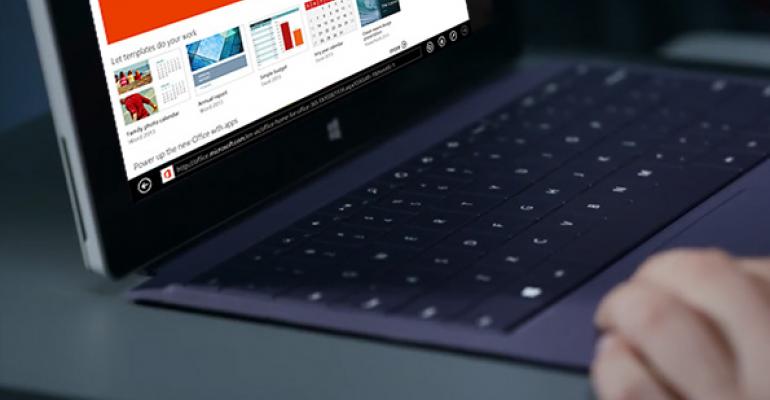Windows 8.1 includes Internet Explorer 11, a major new revision to Microsoft's web browser. This is particularly true in the "modern" mobile environment, where IE 11 offers a dramatically improved feature set when compared to its predecessor. So before you start browsing, make sure you've configured IE to work the way you want.
As before Internet Explorer 11 options can be accessed from the Settings charm: While using IE, choose Settings and then Options. But now there are many more options to configure.

The following options are available from this interface.
Always show address bar and tabs
Set to Off by default—which mimics the only way IE 10 worked in the original version of Windows 8—this option can be enabled in order to keep the browser "chrome"—the address bar and a unique, miniature version of the browser's tab bar—onscreen at all times.

From this interface, you can access all of IE's normal address bar- and tab-based features, including the ability to browse tabs on your other devices. But it does take up a bit of space, so it's probably best used on PCs with high resolution displays.
Note: The ability to open tabs from other PCs was discussed previously in Windows 8.1 Tip: Open IE Tabs from Other PCs.
Zoom
Another option which is critical to PCs with high-resolution displays, this lets you zoom the content on web pages by specific percentages and independent of the display scaling used by the OS. Consider the following web page, zoomed normally (100 percent zoom).

As you can see, there is a lot of wasted white space. But with a zoom level that is more customized for this PC—in this case, 125 percent on a PC with a screen resolution of 1600 x 900—the web page is more readable. A zoom level of 150 percent would fill the screen width completely.

Home pages
New to IE 11, you can now configure which web page(s) appear when you launch the browser, just as you can with the desktop version of IE.

The interface is simple enough: Tap Add Current Site to add the currently-displayed page to the list of home pages. You can also tap a listed home page to edit the URL or delete it, removing it from the lsit.
Reading view
As discussed previously in Windows 8.1 Tip: Better Reading with Internet Explorer 11, Microsoft's latest web browser supports a cool new feature called Reading View that turns basic web pages into beautifully laid-out articles. Using the four buttons in Reading View – Style, you can configure how this feature looks.


Likewise, the Font Size pop-up lets you choose between Small, Medium, Large and Larger font sizes in Reading View.


History
This useful button provides a surprisingly granular interface for managing the data that is stored as part of your web history.

Passwords
Here, you will find two options, an On/Off switch that determines whether IE will store your entered web site passwords by default and a Manage button that reveals a list of all of the sites for which IE is storing a password.

This Accounts list displays the URL and account name for each site. If you tap a site, you will see a link that lets you remove that site—and the corresponding but hidden saved password—from IE.

Note: You can also access the Accounts interface directly from Settings, Accounts
Phone numbers
By default, IE 11 will detect phone numbers on web sites and display them as clickable links that will trigger the Skype app to call that number. If you would prefer to disable this functionality, you can set this option to Off.

Fonts and encoding
While IE is configured to use the same language settings as does Windows, this option opens a Fonts pane with a variety of font-related options you can set, including font family, fixed width font family, reading direction, and others.

In addition to the options you can configure from the browser, it's worth examining which browser features sync between your PCs using SkyDrive. You can find this interface in PC Settings, SkyDrive, Sync Settings. Under the section Other Settings, you will find two options of interest:
Web Browser. Enabled by default, this option determines whether your favorites, open tabs, home pages, history and settings sync between PCs. So any changes you make on the current PC will, by default, sync to your other PCs as well.
Passwords. Also enabled by default, this option determines whether your web site passwords (and other passwords) sync between your PCs. So if you sign in to a secure web site on one PC, that password will auto-fill when you access it from another PC.
Armed with these options, you can make IE 11 work the way you want. And as you can see, it's a far more configurable browser than was IE 10.





